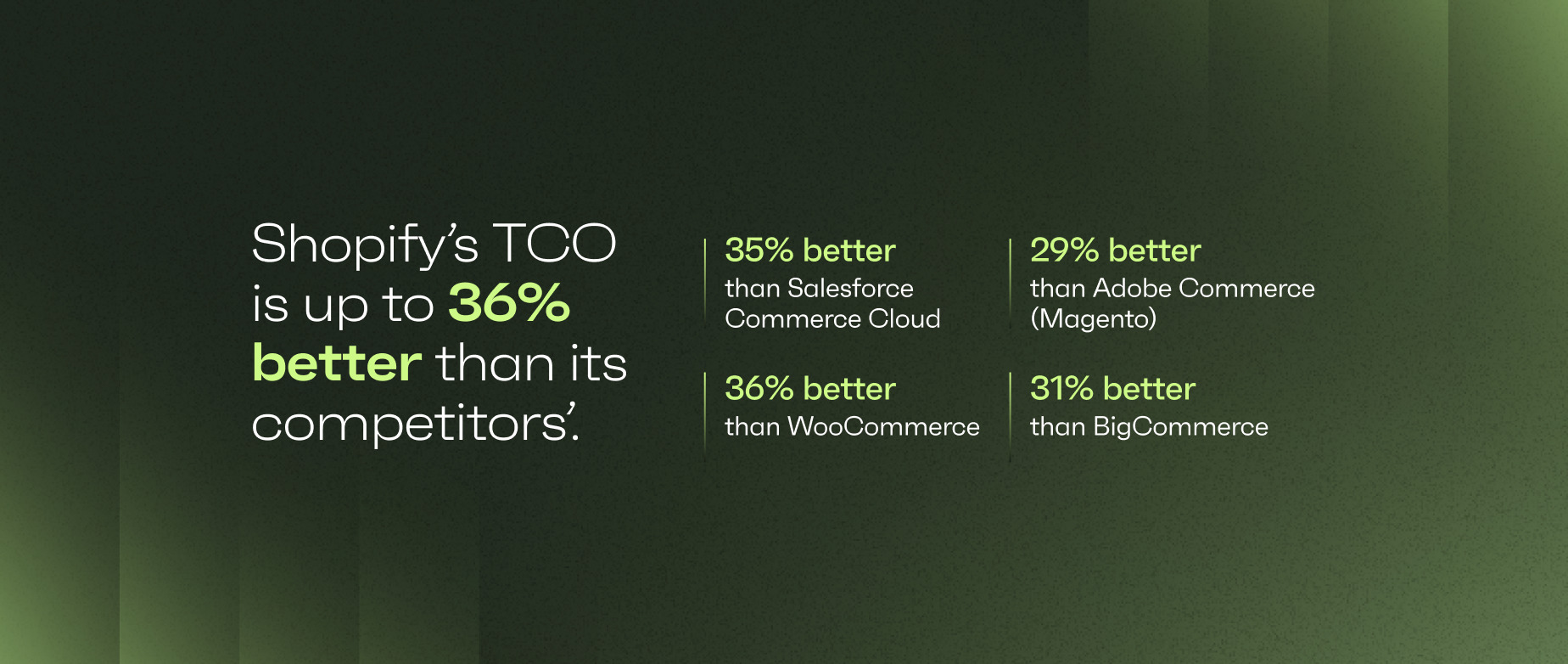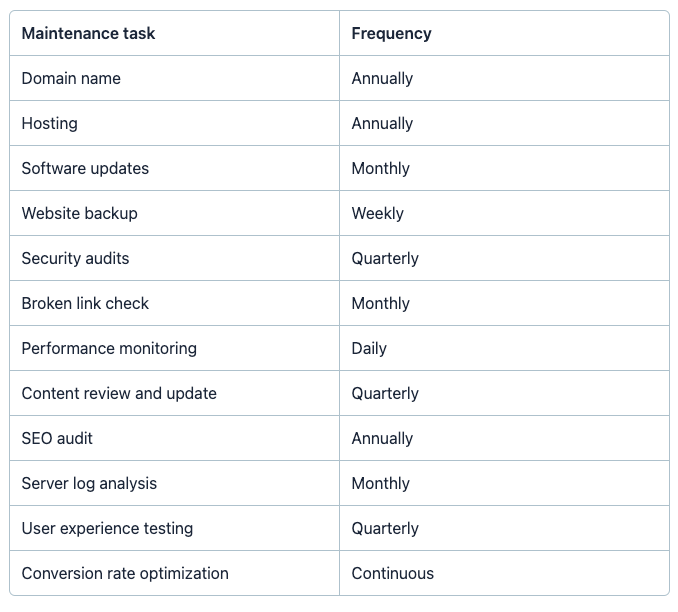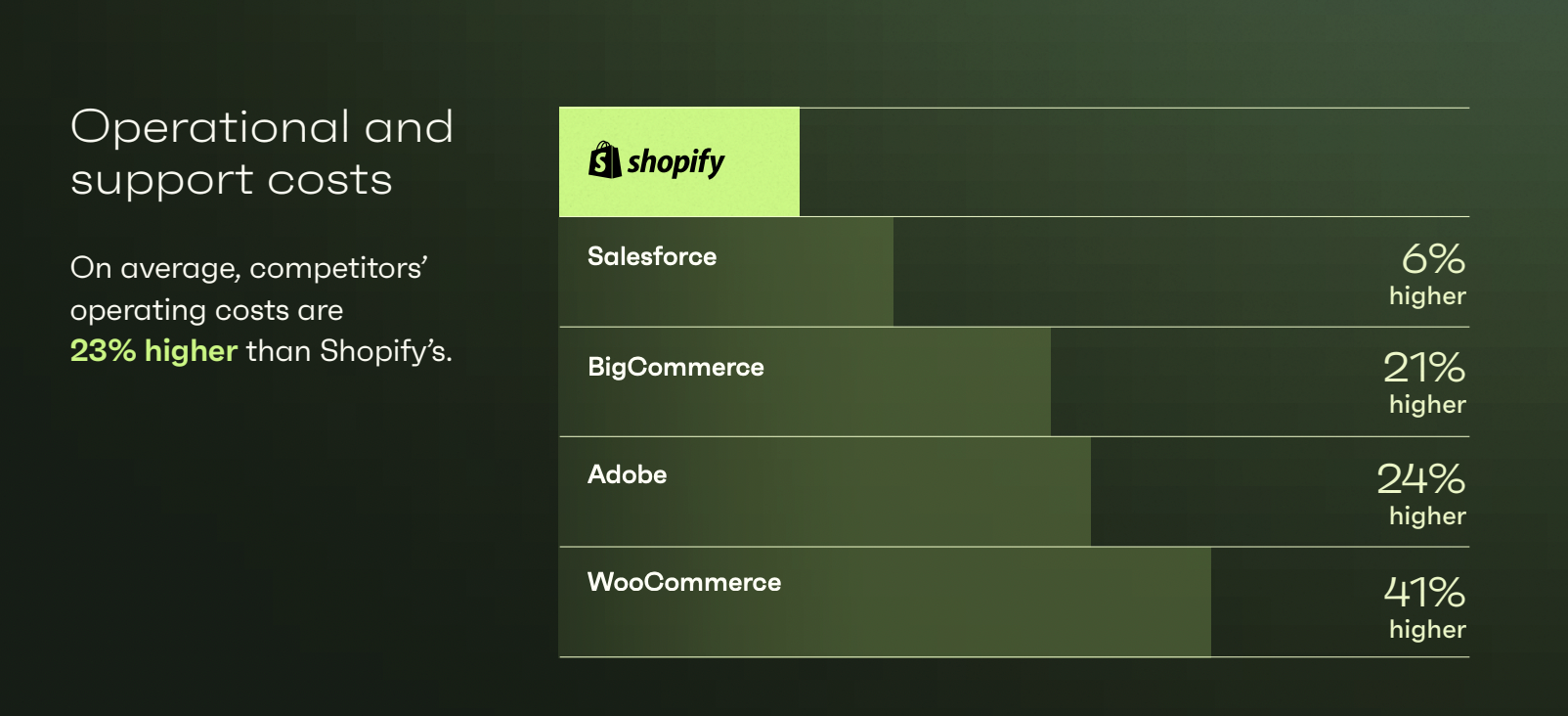Website maintenance is much like home maintenance—ignore it now and you’ll pay double later. From keeping customer data safe to maintaining your brand rep, it's critical to success in ecommerce. We’ve all used websites that feel like they haven’t been updated in years. They load slowly, look awful on phones, and generally give off mid-2000 vibes. In 2024, no large ecommerce business can afford to be that website. If you want to provide a seamless user experience, you need to keep your website fast, functional, and secure. But all that comes at a cost. And those costs aren’t always clear. Especially in enterprise-level ecommerce where you need advanced features to stay ahead of the competition.
In this post, we’re going to delve into the factors influencing website maintenance costs. We'll look at how web maintenance costs typically break down and explore strategies for reducing them without compromising on performance.
Understanding website maintenance costs
Understanding website maintenance costs is a key part of calculating the total cost of ownership (TCO) of your ecommerce platform. TCO calculations can help businesses evaluate their return on investment (ROI). When it comes to TCO, transparency is everything. Hidden, ongoing, and indirect costs can debilitate your business if you don’t understand what they are and where they’re coming from.
According to a recent IDC report, 66% of companies consider cost-effectiveness as a key platform feature, while 91% said low total cost of ownership is important when changing to headless, hybrid, or full-stack. Objectively, TCO is a major priority in the enterprise space. When choosing an ecommerce platform, you need your team to be obsessive about seeking out hidden costs so you can evaluate how they affect your business. At Shopify, we’re focused on maximizing customer value by offering the most operationally efficient ecommerce platform in the world. We’re committed to giving every business a realistic understanding of pricing. That’s why we will always provide businesses with a comprehensive view of TCO before partnering with businesses.
Breakdown of website maintenance costs
Successful enterprise websites typically boast polished design, advanced features, and extensive product catalogs. All of which need significant time and resources. The first step to managing website maintenance costs is understanding the full range of website elements that may need maintaining. Let's explore the key technical factors contributing to website maintenance costs.
Hosting
Enterprise-scale websites typically need robust hosting solutions. They’ll need to handle high traffic volumes, load rapidly, and provide scalability and reliability. Managed hosting services or dedicated servers are usually needed to meet these requirements. This means higher hosting costs compared to shared hosting plans.
Security
Protecting customer data from data breaches and hacking attacks is a vital part of enterprise ecommerce website maintenance. You’ll need to account for maintenance of robust security measures, including SSL certificates, firewalls, malware scans, and regular security audits.
Technical support
Enterprise websites often need dedicated technical support to address issues promptly, implement updates, and provide ongoing maintenance. This may involve hiring in-house IT professionals, outsourcing technical support services, or subscribing to managed service providers.
Content management
A good content management system (CMS) is key to smooth content updates. Everything from product listings to descriptions, images, and promotional materials are essential for engaging customers and driving conversions. But maintaining and optimizing the CMS is an additional maintenance cost you could easily miss.
Platform updates and upgrades
Enterprise ecommerce platforms need regular updates to keep up with the latest technologies, security patches, and regulatory requirements. These updates may involve licensing fees, development costs, and downtime for implementation.
Third-party integrations
Enterprise ecommerce websites must integrate with various third-party systems including enterprise resource planning (ERP), customer relationship management (CRM), product information management (PIM), and marketing automation tools. Maintaining and troubleshooting these integrations, as well as managing API connections and data synchronization, contribute to maintenance costs.
Performance optimization
Website performance—including page load times, mobile responsiveness, and user experience—is crucial for retaining visitors and improving search engine rankings. In 2024, your ecommerce platform should automatically handle performance optimization tasks, such as image compression, code minification, caching, and content delivery network (CDN). If it doesn’t, implementation will need ongoing maintenance efforts.
Compliance requirements
Enterprise ecommerce websites must meet various compliance standards, such as Payment Card Industry Data Security Standard (PCI DSS) for payment processing and GDPR for data privacy. You need to comply with these regulations through audits, assessments, and ongoing monitoring.
Strategic initiatives
Rolling out strategic activities such as SEO, email marketing, and social media advertising needs ongoing maintenance and optimization efforts. These all require maintenance which add to your costs. But remember they are also an investment that can drive traffic, conversions, and revenue for the website.
How much does website maintenance cost?
Your company’s website maintenance costs depend heavily on the type of website you're managing. Although every ecommerce website is unique, there are several common expenses to budget for, including:
Hosting. Website hosting can anywhere from $2.49 all the way to $1,000. These costs increase and decrease based on the traffic your site gets, as well as any additional features your business needs. While many website builders require you to bring your own hosting and domain name, Shopify includes these services as part of your monthly plan. Hosting on Shopify also includes features such as unlimited bandwidth, Level 1 PCI compliance, and an SSL certificate.
Payment processing. Payment processors enable you to accept payments online via credit cards, debit cards, and a variety of digital pay options. The fees you pay will vary based on the platform you choose and the plan you opt for. The Shopify Basic plan comes with a processing fee for online credit card payments of 2.9% plus 30¢ per transaction, while Advanced Shopify storefronts pay 2.5% plus 30 per transaction.
Add-ons and extensions. Although Shopify includes a long list of powerful features out of the box, most merchants find that they need a variety of add-ons and extensions to build the storefronts their businesses need. Shopify’s App Store offers thousands of apps for merchants to choose from. In addition to the upfront costs of purchasing apps, you’ll also need to account for any headcount required to implement and maintain them.
When it comes to a headless ecommerce build, maintenance costs vary even more dramatically. Each headless storefront is unique and comes with its own maintenance challenges. Ultimately, the biggest cost of maintaining a headless build is headcount. Based on the migrations we’ve supported, a team of five to seven engineers is the minimum for successfully maintaining your headless storefront.
According to research from an independent consulting firm Shopify commissioned to study TCO across major platforms, on average, our competitors’ platform costs are 30% higher and their operating costs are 23% higher.
Strategies for reducing website maintenance costs
We’ve covered more detailed tips on how you can reduce maintenance costs in a previous post.
If you have time, we highly recommend diving into that post. But if not, here’s a summary of the most effective methods of cutting your website maintenance costs:
Operational audits
Preventative maintenance
Supplier contract renegotiation
Life cycle management
Inventory management
Optimizing maintenance, repair, and operations (MRO) inventory
Extending warranty or insurance
Operational audits
Of course, the first step before all others is choosing the right platform. Remember to choose an ecommerce platform that helps you save on maintenance costs from the start. Shopify, for example, has been shown to have lower maintenance costs and the best converting checkout compared to other platforms, saving and making you more money in the long run. According to the research we commissioned, Shopify outperforms the competition when it comes to all categories of TCO—up to 36% better than competitors.

Frequency of website maintenance tasks
We’ve talked about hidden and ad hoc costs that can trip up even the largest enterprise ecommerce businesses. But what about those maintenance tasks which are performed regularly? Here’s some guidance on how frequently you might want to run these tasks:

The task list above can bog down web development teams of all sizes. They’re undeniably necessary, but few people (if any) get excited about auditing links, running software updates, and renewing hosting services. Ignoring these items could impact your user experience, security, and ultimately lead to even higher maintenance costs.
While many ecommerce platforms put the burden on retailers to maintain their storefronts, Shopify does much of the heavy lifting for our merchants. Every update to the platform is thoughtfully designed to remove complexities and minimize the amount of time required to maintain a storefront, and Shopify has made a massive commitment to continuous innovation. In 2023, Shopify allocated $1.7 billion to research and development, an effort that was highlighted in the 2023 Gartner Magic Quadrant for Digital Commerce.
These investments allow our customers to spend more developing innovative ways to generate revenue, and are a big reason why a leading independent consulting firm found that Shopify’s total cost of ownership (TCO) is on average 33% better than that of its competitors.

Control costs by prioritizing preventative maintenance
When it comes to website maintenance costs, preventative maintenance is crucial. Routine, scheduled updates and optimizations catch problems before they become expensive issues. Remember, problems in your enterprise tech stack can compound quickly. As a company grows, reactive maintenance can escalate to an IT disaster, driving away customers with downtime and malfunctions. If you're feeling like your current platform isn't keeping up with your needs, or if you're finding that maintaining your website is costing more than you can manage, we're here to help. Shopify has a track record of boosting conversion rates while cutting maintenance expenses. If you want to spend less time on maintenance and “keeping the lights on” work so that you can dedicate more time toward revenue-generating innovations , get started with our free TCO calculator.
Website maintenance cost FAQ
What factors influence the cost of website maintenance?
Several key factors impact the extent of work and resources needed to keep an ecommerce website running smoothly. The primary factors to consider are:
Hosting
Security
Technical support
Content management
Platform updates and upgrades
Third-party integrations
Performance optimization
Compliance requirements
Strategic initiatives
How much does it typically cost to maintain a website monthly?
Your company’s website maintenance costs depend heavily on the type of website you're managing. Here’s a breakdown of website maintenance costs by website types, such as corporate, standard and custom ecommerce.
Corporate website: $200 to $3500/mo
Web application: $300 to $2500/mo
Custom corporate website: $350 to $4500/mo
Ecommerce website: $1500 to $2500/mo
Custom ecommerce website: $2000 to $5000/mo
Can I reduce website maintenance costs by doing some tasks myself?
A do-it-yourself approach rarely results in more affordable website maintenance service costs. It's an option for budget website owners but is not cost-efficient at enterprise scale. The total cost of self-maintaining a website depends on the number of features you use, how complex they are, and the level of in-house technical knowledge at your disposal and number of staff required to maintain it.
How does the cost of website maintenance compare to the potential cost of a website outage or security breach?
An often-quoted report from Ponemon Institute suggests the cost of an outage is nearly $9,000 per minute. Meanwhile, Statista estimates the average cost of a security breach to global retail companies is $3.8 million. So no matter how large and complex your website, the cost of maintenance simply isn’t comparable to the huge cost of inaction.


